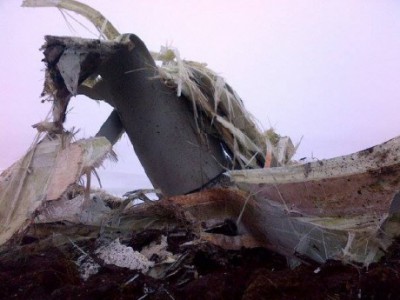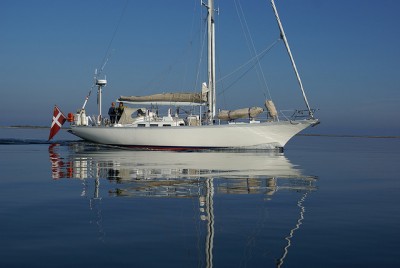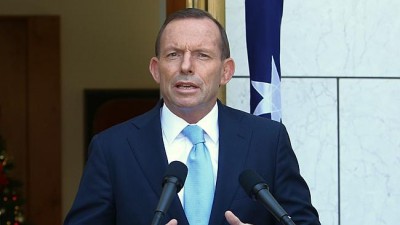
****
In recent times – with the wind industry taking a belting around the planet – its spruikers have taken to clinging to any vestige of hope, with the anxious zeal of shipwreck survivors happening upon a little fortuitous flotsam.
One such “hope”, is their belief that China provides the perfect example of what wind power outfits can do when immune from the pesky obstacles thrown up by ol’ chestnuts, like free power markets and democratic rights, say.
The line is spun that China is leading the world in the roll-out of giant fans; and is well on the way to a 100% wind powered future.
But, as with almost everything that the wind industry tosses up as self-justification, the facts tell a somewhat different story.
Chinese wind earnings under pressure with fifth of farms idle
Reuters
Sue-Lin Wong and Charlie Zhu
17 May 2015
China’s wind farm firms are feeling the heat as state grid operators deliberately delay hooking them up and cut back on purchases, wasting about a fifth of the total wind power output or enough electricity to run Beijing for 40 days.
China is now the world’s top wind power producer thanks to policies designed to boost renewable energy use, with an installed capacity of over 100 gigawatts – more than a quarter of the world’s total and almost enough to light up Spain.
But capacity has raced far ahead of grid construction, with state grid operators reluctant to connect wind farms in remote areas as long as their profit margins on renewables lag that of coal-generated electricity.
Instead, they are resorting to a practice known as curtailment, or slowing the connection of wind turbines to their grids and limiting the use of wind power. This in turn is leading to wasted capacity and lower returns on wind power investments.
“Considering the huge growth in wind installment we saw last year, curtailment is going to be a big problem (for wind power producers) … China is one of the worst countries affected,” said Shanghai-based Shane Sun with international renewable energy consultancy MAKE.
In the first three months, curtailment almost doubled from a year ago to 10.7 billion kilowatt-hours, nearly a fifth of total wind power generated in China, official data showed. That’s equivalent to output generated with about 3.5 million tonnes of coal, or 7 percent of China’s first-quarter coal imports.
BREAKNECK EXPANSION
Meanwhile, generating capacity expansion continues at breakneck speed. While China still relies on coal for most of its power generation, it has more than doubled its installed wind power capacity in the past five years, and Beijing wants to double it again to 200 GW by 2020 with annual investments of $27 billion.
As if that wasn’t incentive enough, state-run power producers are also racing to build capacity to lock in current prices ahead of an official cut next year.
But this expansion coincides with China’s economic slowdown and a sharp decline in the pace of growth in overall power demand, which rose an anaemic 0.8 percent in the first quarter, its slowest rate in more than five years, industry data showed.
INFLATED PRICES
While listed wind firms have seen their shares surge 18-38 percent this year, compared with a 17 percent rise on the broader Hang Seng index, some industry insiders are urging investors to rein in their enthusiasm.
“I’m not entirely sure where the optimism came from,” said an executive at top power producer Datang Power, a sister company of wind farm operator Datang Renewable and a wind farm owner.
“Overall electricity demand is very weak. It is unlikely wind power will outshine others.”
Analysts said wind-related stocks like Datang Renewable have risen partly on expectations of higher wind speeds in China this year after they were down 8-12 percent in 2014.
Even so, all those unused turbines probably won’t be switched on until ultra-high voltage lines, designed to enable long-distance transmission of renewable power from the windy, remote north to population and industry hubs in the south and east, are completed in 2017.
In the meantime, some companies like Huaneng Renewables are building wind farms in the east and south where better grid infrastructure offsets low wind speeds and land shortages.
Some analysts say investors may be in for an earnings disappointment this year unless wind speeds improve and the government enforces a long-delayed rule requiring grid operators to buy certain amounts of power from renewable sources.
Wind farm operators are mostly owned by state-run power groups like China Guodian and their listed units such as Huaneng and Longyuan. (Editing by Stephen Coates)
Reuters

****
Hmmm … So, there you have it – the great wind power fraud is the same the world over. To recap:
20% or more of China’s wind power capacity isn’t even connected to the grid (talk about idle gestures);
grid operators aren’t about to change that equation, simply because they’ll lose money on the “deal”;
the vast bulk of China’s power generation comes from reliable coal fired plant (as you’d expect in a country that’s serious about economic growth, industry and employment);
investors are taking a flogging and are being told to pray to the Wind Gods in the “hope” of better returns next year; and
the whole scam depends (apart from suitably benevolent breezes) on the continued willingness of governments to force (through mandated subsidies and/or fines) grid operators or retailers to take power at exorbitant cost, from an entirely weather dependent generation source, that has no commercial value – apart from pocketing subsidies or avoiding fines.
Another parallel pops up from the piece above for the “hopes” of wind power outfits the world over – Australia no exception. And that’s the fact that for every turbine that gets speared into the heart of some idyllic, peaceful and prosperous rural community, there has to be some kind of connection to a sucker (household or business) prepared – or, rather, forced – to pay 4 times the price for power, which can only be delivered at crazy, random intervals – if at all.
Grids cost serious money to build; and operators need to demonstrate juicy, on-going returns to entice investors to stump up the cash needed to build them. Those returns can only be recouped via retail power bills; and cash-strapped households and struggling businesses – already wild about increasing power bills – will only get wilder as escalating network costs get tacked on top – especially when they realise that cost is both pointless and unnecessary.
Retailers have been railing against the cost of adding to network capacity – simply because it adds to already spiralling retail power costs, making it harder to sell power to people and businesses that can barely afford it now: see this submission by Energy Australia to the Australian Energy Regulator. And this submission from South Australia’s Business lobby.
And, as to the unnecessary hardship caused by escalating power prices:
Victoria’s Wind Rush sees 34,000 Households Chopped from the Power Grid
Casualties of South Australia’s Wind Power Debacle Mount: Thousands Can’t Afford Power
A complete lack of transmission grid in rural and remote Australia (where wind farms are threatened) is only one pointed item on the list of mountainous obstacles faced by wind power outfits in Australia.
That growing and insurmountable set of hurdles includes retailers refusing to enter Power Purchase Agreements (see our post here); Banks refusing to lend for new wind farms and calling in loans for existing operations (see our post here); a hostile Senate Inquiry looking to introduce uniform National noise laws (including limits on infrasound inside homes) (see this SMH article); and hints from Canberra insiders of a Royal Commission into the worst aspects of wind industry corruption.
But the lack of grid infrastructure is an economic obstacle with a couple of wind industry killing guarantees attached.
In the first instance, wind power outfits will – like their Chinese counterparts – have no grid to connect to: which means no ability to suckle up to the LRET’s $46 billion mandated REC Tax/Subsidy tit.
And, given the former, the inevitable political implosion of the LRET – as retailers are forced to pay the massive, mandated penalty tax. It’s that tax – as young Greg Hunt calls it: “a massive $93 per tonne carbon tax” – that has Federal MPs spooked. With a $20 billion price tag, the Coalition’s electricity “stealth” tax is going to throttle any chances of Tony Abbott avoiding a future electoral walloping.
No Liberal/National voter is going to be impressed to learn that a so-called “Conservative” government – elected with a mandate to kill off the Green/Labor Alliance’s job and economy destroying “carbon” tax – had – with the recommendations of its own RET Review Panel (see our post here) – the perfect chance to slaughter the most obscenely generous corporate welfare scheme in the history of the Commonwealth.
But, instead of following its own pertinent advice, Abbott and his team let themselves be hoodwinked by wind industry front men, their “own” Ian “Macca” Macfarlane and his youthful ward, Gregory Hunt into the deluded belief that the LRET is a no-cost, feel-good, dead-set vote winner. Their latest deal with Labor will add more than $3 billion annually to all Australian power bills, designed to be shovelled off the top as a direct subsidy to their mates at Infigen & Co.
With an election tipped for later this year, or early next, Tony Abbott is going to have to explain the “necessity” of providing wind power outfits with a $46 billion subsidy – the full cost of which will be borne by power punters – to produce a product that no retailer in their right mind will sign up to buy. His pitch, on that score, will be made at a time when Australia’s long-resources-boom is fast becoming a piece of fading nostalgia; the economy is about to hit the skids; and the jobs and prosperity taken for granted by the last generation are under serious threat – not least through escalating power costs.
As the American says in response to the overly ambitious, setting off on some hubristic venture: “well, good luck with that!”


Reblogged this on Jaffer's blog.
When is Australia going to wake up to the wind industry con and take notice of the problems associated with wind turbines which after all is an industry not farms.
There are peer-reviewed papers proving they are not viable (prices of electricity rise), CAUSE health issues along with noise, killing birds by the millions and as they show cattle grazing underneath turbines they neglect to tell you there is feed there as well.
The Government takes notice of ETSU which is a noise working group consisting of people in the wind industry telling us how to run wind turbines. 14 members of this group in the USA ignore aerodynamic modulation and noise monitoring which is totally ineffective in protecting residents from aerodynamic modulation because the specified descriptor (LA90.10min) ignores the noisiest 90% of each 10 minute measurement period and gives a result based on the loudest noise during the quietest 10% of the period.
ETSU-R-97’s recommendation that noise monitoring is carried out at the nearest sensitive properties fails to take into account of the fact that aerodynamic modulation noise can be heard at considerable distance from wind turbines and can be difficult to detect closer to the turbines.
DAMN THE PHYSICS
FULL PINWHEELS AHEAD HELMSMAN
Wind Energy Generation: The $500 Billion Global Fraud – The British People and those across the world are Being Totally Conned and Absolutely Misled by our Politicians with an energy policy that is based upon predominantly, hot-air For Wind Turbines are sheer economic madness in the long-term – http://worldinnovationfoundation.blogspot.co.uk/2015/05/wind-energy-generation-british-people.html
All windfarm fans should be disconnected from all power grids, as they all have no place on this planet.
It’s not just ‘grids’ that cost a power of money to build that escalates costs of ‘wind power’, it is the mega bucks needed to allow the grid to function with ‘wind power’ being forced into it that costs the big bucks.
Anyone who tells you differently are lying through their teeth (and that includes the Clean Energy Regulator and AEMO and the CSIRO and every other good for nothing ‘professional elitist’ body in the country).
We need to start very seriously to call this bunch of ‘public teated’ bodies and the smart alecs in them to account.
Every hard working individual in private industry is being totally screwed by these people and now Abbott has finally given up the working folk to join the ‘latte’ set.
Stop selling your soul Abbott and stop kicking the crap out of your supporters, do the right thing and sack MacFarlane and Hunt and start again. How come you were head of the pack and are now up the back? Talk to David Cameron, tell your weak minded back benchers to go read their comic books and keep quiet.